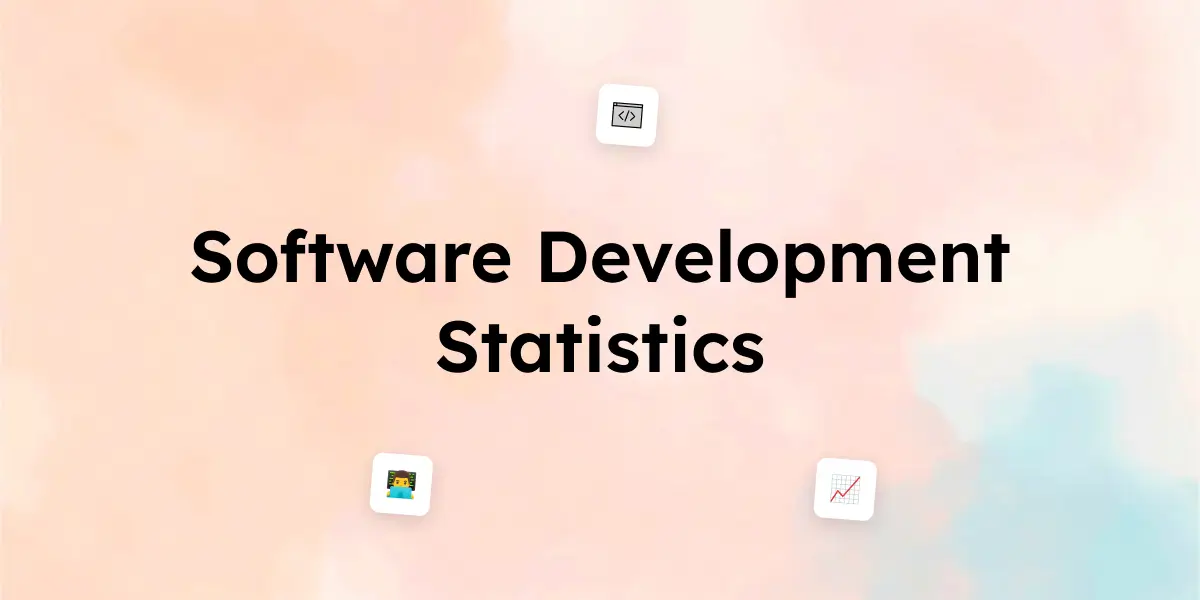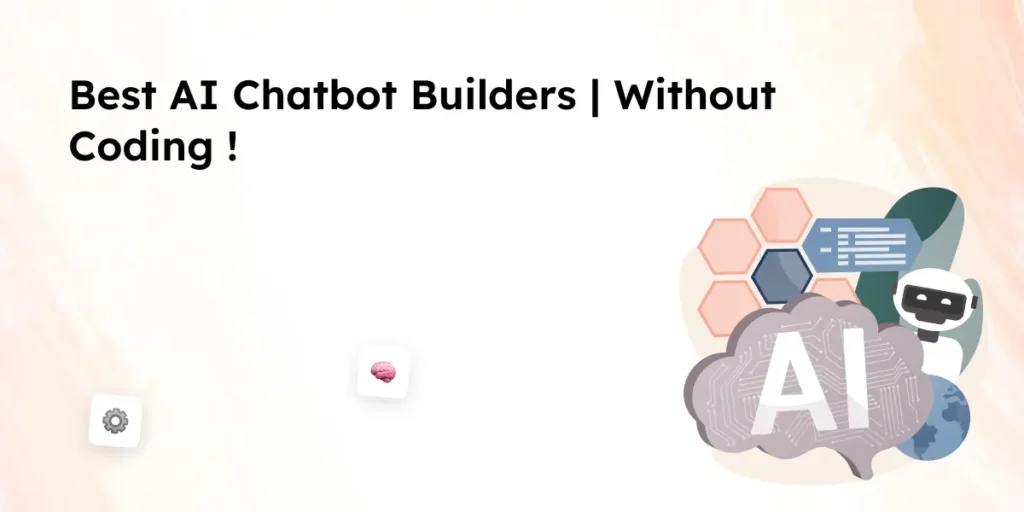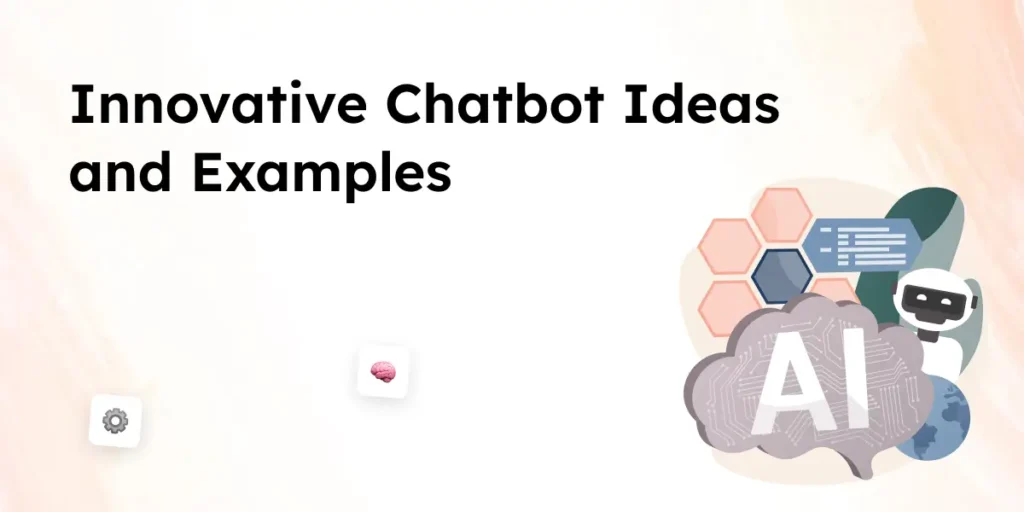Welcome! You’re in Default Statistics Mode, where I break down statistical concepts, run simple analyses, and make stats easy to understand. Whether you need help with probability, hypothesis testing, or basic data analysis, I’ve got you covered!
What’s on your mind? Need an explanation, a calculation, or maybe some practical examples? 😊📊
By the way, thanks for engaging! If you’re into AI, stats, and passive income opportunities, feel free to join our VIP AI Discord community here. It’s a great place for the latest AI news and discussions!
30+ key Software Development statistics
Software development is evolving rapidly, and 2025 is shaping up to be a big year with trends like AI-driven coding, remote collaboration, and security-first development. Below, I’ve compiled 30+ key statistics that define software development trends in 2025.
1️⃣ Global Software Development Market Trends
- 🌍 The global software market is projected to reach $1.9 trillion in 2025, growing at a CAGR of 11.6% .
- 💻 The custom software development industry alone is expected to hit $95 billion in 2025.
- 🚀 Agile development adoption has grown to 92% among software teams .
- 🏢 85% of enterprises are prioritizing cloud-native applications over traditional on-premise solutions.
- 📈 Low-code/no-code adoption is expected to power 70% of new applications by 2025.
2️⃣ AI & Automation in Software Development
- 🤖 AI-assisted coding tools (like GitHub Copilot) will generate 45% of all code by the end of 2025.
- 📊 Developers using AI tools report a 30% productivity boost in coding tasks.
- 🛠️ AI-driven testing tools are reducing debugging time by 40% on average.
- 🚀 Automated DevOps pipelines have increased release speeds by 60%.
- 🔍 AI-powered code review tools are catching 85% of security vulnerabilities before deployment.
3️⃣ Programming Language Trends
- 🐍 Python remains the #1 programming language in 2025, followed by JavaScript and Java (Stack Overflow Developer Survey).
- 📈 Rust adoption has grown by 20% YoY, especially in system-level programming.
- 🏆 TypeScript is now used by 72% of JavaScript developers for large-scale projects.
- 🌎 Go and Kotlin are among the fastest-growing languages for backend and Android development.
- 🔧 WebAssembly (Wasm) is seeing a 300% rise in adoption for running high-performance apps in the browser.
4️⃣ Remote & Hybrid Work in Software Development
- 🏠 75% of developers now work remotely or hybrid.
- ⏳ 90% of software teams use async communication tools like Slack, Teams, and Notion.
- 🌍 Global hiring of software engineers has increased by 35% as companies tap into remote talent.
- 💰 Remote software developers earn 20% more than their on-site counterparts due to global demand.
- 🤝 Virtual pair programming has grown by 50%, improving collaboration across distributed teams.
5️⃣ DevOps & CI/CD Trends
- ⚙️ 80% of companies now follow DevOps best practices to speed up development cycles.
- ⏩ Continuous Integration/Continuous Deployment (CI/CD) is used by 90% of high-performing teams.
- 🚀 Feature flagging adoption has increased by 60%, enabling safer, incremental rollouts.
- 🔄 Infrastructure as Code (IaC) usage has doubled since 2023, driven by automation needs.
- 🛡️ DevSecOps integration has risen by 45% as security becomes a key DevOps focus.
6️⃣ Software Security & Compliance
- 🛡️ 70% of cyberattacks in 2025 will target software supply chains.
- 🏢 Zero-trust security models are adopted by 68% of enterprises for application security.
- 🔐 Open-source vulnerabilities have increased by 30%, leading to stricter compliance rules.
- 📝 80% of development teams now use automated security scanning in CI/CD pipelines.
- 💾 Data privacy regulations like GDPR and CCPA now impact 90% of software companies worldwide.
7️⃣ Emerging Technologies in Software Development
- 🌐 Quantum computing investments have doubled in 2025, with companies like IBM and Google leading the way.
- 🕶️ Metaverse development is seeing a 50% growth, driving demand for 3D software engineers.
- 🚀 Edge computing adoption is up 40%, improving performance in IoT and real-time applications.
- 🔗 Blockchain-based applications are now mainstream, used in 50% of enterprise software solutions.
- 🤖 AI-generated software components are reducing development time by 35%.
Conclusion
Software development in 2025 is propelled by AI-assisted coding tools, transforming how teams create and maintain software. With nearly half of all code predicted to be generated by AI, developers can concentrate on innovation and problem-solving instead of repetitive tasks. Popular languages such as Python, JavaScript, and TypeScript still lead, while Rust, Go, and Kotlin steadily expand their footprint. WebAssembly (Wasm) is shaping web performance by enabling near-native speeds in browser-based applications.
Security remains a critical priority, particularly with 70% of cyberattacks targeting software supply chains. DevSecOps practices, zero-trust models, and automated scanning help embed security throughout the development lifecycle, while stricter open-source compliance addresses evolving threats. Remote and hybrid work has become the norm, with 75% of developers working offsite and benefiting from virtual collaboration tools and global talent. Emerging technologies—including quantum computing, blockchain, and metaverse development—continue to evolve, bolstered by cloud-native architectures for scalability and cost-effectiveness.
FAQs
1. How is AI impacting software development in 2025?
AI is revolutionizing software development by automating coding, debugging, testing, and security analysis. AI-powered tools like GitHub Copilot and Tabnine assist developers in writing code, reducing development time by up to 45%. AI-driven testing and security tools also help catch 85% of vulnerabilities before deployment, improving software quality.
2. What programming languages are most popular in 2025?
Python remains the #1 programming language, followed by JavaScript and Java. TypeScript, Rust, Go, and Kotlin are also gaining popularity due to their performance and scalability benefits. WebAssembly (Wasm) is becoming mainstream for high-performance web applications.
3. Is remote work still a trend in software development?
Yes! In 2025, 75% of developers work remotely or in hybrid setups. Companies continue to hire global talent, using async communication tools like Slack, Teams, and Notion. Remote developers earn 20% more on average, highlighting the shift towards a distributed workforce.
4. What are the biggest security challenges in software development?
The biggest security threats include software supply chain attacks, open-source vulnerabilities, and insecure APIs. Zero-trust security models, DevSecOps, and automated security scanning are becoming standard practices to combat these risks. 70% of cyberattacks in 2025 will target software supply chains.
5. What emerging technologies are shaping software development?
The key emerging technologies include AI-assisted development, quantum computing, blockchain, edge computing, and metaverse applications. Cloud-native architectures are also dominating, with 85% of enterprises prioritizing cloud-based development.
Sources & Researches :
Statista
Stack Overflow Developer Survey 2024/2025
State of Agile Report 2025
GitHub Octoverse Report 2025
Cybersecurity Ventures Reports



